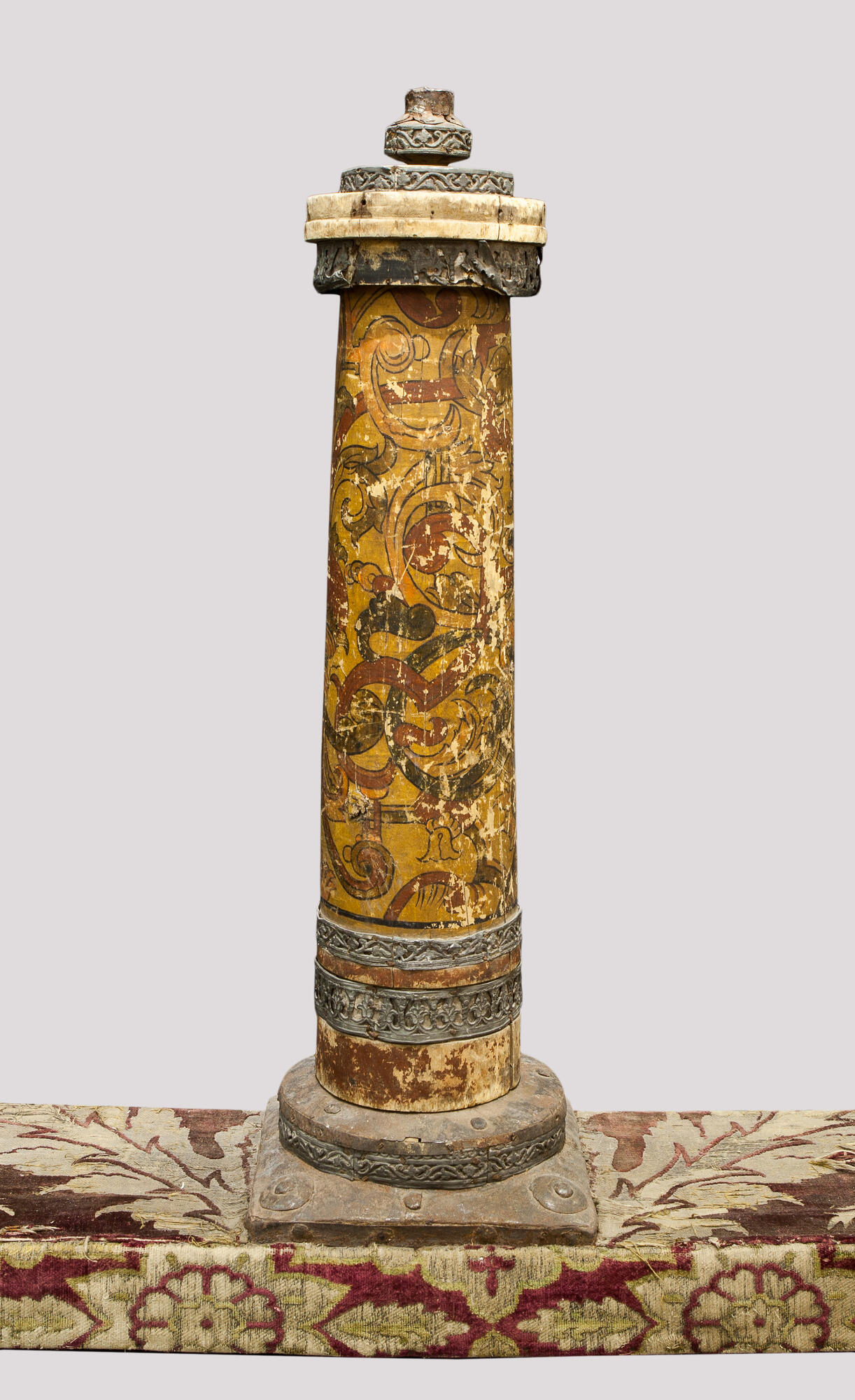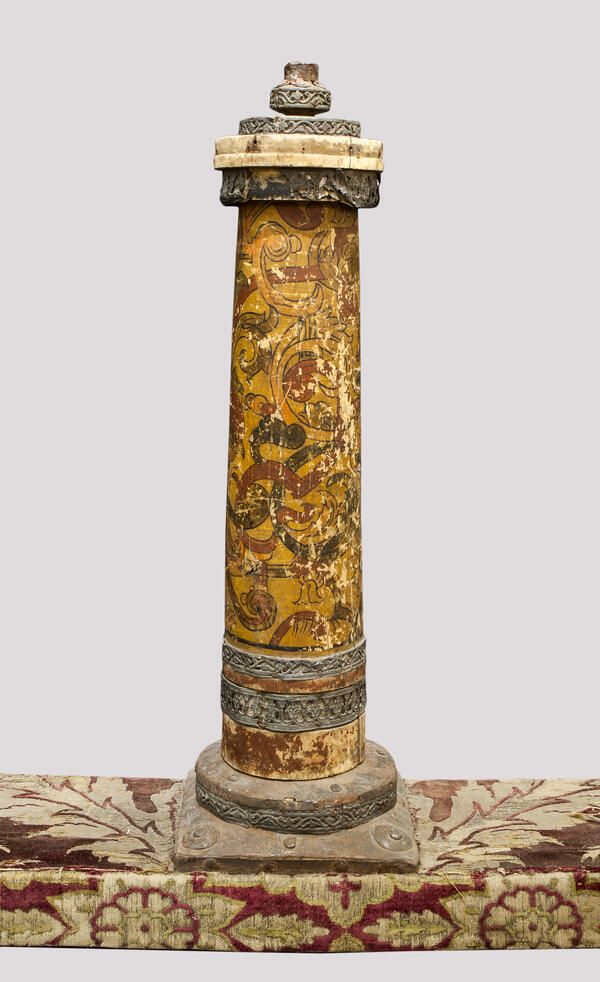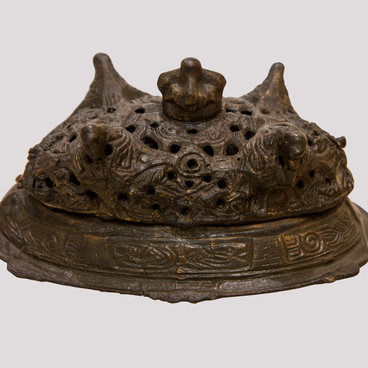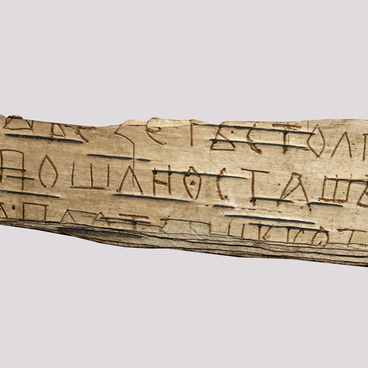In the 17th century, floor candlesticks of an unusual shape with a very distinctive name ‘skinny candle’ were used in churches. The name appeared because a deck was taken to make a candlestick, hollow (empty, ‘skinny’) inside. This was done by chiseling, or with the help of oil: it was poured into a small hole in the barrel, then set on fire, trying not to burn through the walls. With a special tool, craftsmen took out the burnt wood, reached the middle of the log, turned it over and did the same from the other end.
There is another version of the name of the candlestick: skinny candles were used during services held in the days of Great Lent and were associated with pre-Easter ceremonies. Historians suggest that in their image these candlesticks were supposed to imitate a real candle, the so-called pood candle.
Wooden candlesticks were painted, gilded, decorated with ornamental carvings. They were decorated with images of saints, as well as ornaments of herbs and flowers, which symbolized the Gardens of Eden. A candle from the Smolensk Museum collection is painted and decorated with floral ornaments, extremely popular in the 17th century and borrowed from books. It is interesting that these ornaments subsequently became firmly established in the everyday life of Russian folk art and in some of their fragments survived until the 20th century. The colors of candle painting are dominated by red, green and gold — the favorite colors of folk art. The connection of the tincture with the church symbols of color is not excluded. In icon painting red symbolizes the blood of Christ, green is a symbol of life and spring, gold is the light of divine radiance.
Due to the constant use in temple worship and processions of the cross, ancient candlesticks have survived to this day in very limited quantities.
This is also because of the fragility of the materials used to create them, and the purposeful destruction of aesthetically ‘outdated’ items.
The skinny candle came to the Smolensk Museum from the collection of Princess Tenisheva. The princess actively collected objects of ancient church decoration, since she understood that ancient church art is closely connected with the further development of artistic creativity in Russia.
There is another version of the name of the candlestick: skinny candles were used during services held in the days of Great Lent and were associated with pre-Easter ceremonies. Historians suggest that in their image these candlesticks were supposed to imitate a real candle, the so-called pood candle.
Wooden candlesticks were painted, gilded, decorated with ornamental carvings. They were decorated with images of saints, as well as ornaments of herbs and flowers, which symbolized the Gardens of Eden. A candle from the Smolensk Museum collection is painted and decorated with floral ornaments, extremely popular in the 17th century and borrowed from books. It is interesting that these ornaments subsequently became firmly established in the everyday life of Russian folk art and in some of their fragments survived until the 20th century. The colors of candle painting are dominated by red, green and gold — the favorite colors of folk art. The connection of the tincture with the church symbols of color is not excluded. In icon painting red symbolizes the blood of Christ, green is a symbol of life and spring, gold is the light of divine radiance.
Due to the constant use in temple worship and processions of the cross, ancient candlesticks have survived to this day in very limited quantities.
This is also because of the fragility of the materials used to create them, and the purposeful destruction of aesthetically ‘outdated’ items.
The skinny candle came to the Smolensk Museum from the collection of Princess Tenisheva. The princess actively collected objects of ancient church decoration, since she understood that ancient church art is closely connected with the further development of artistic creativity in Russia.



